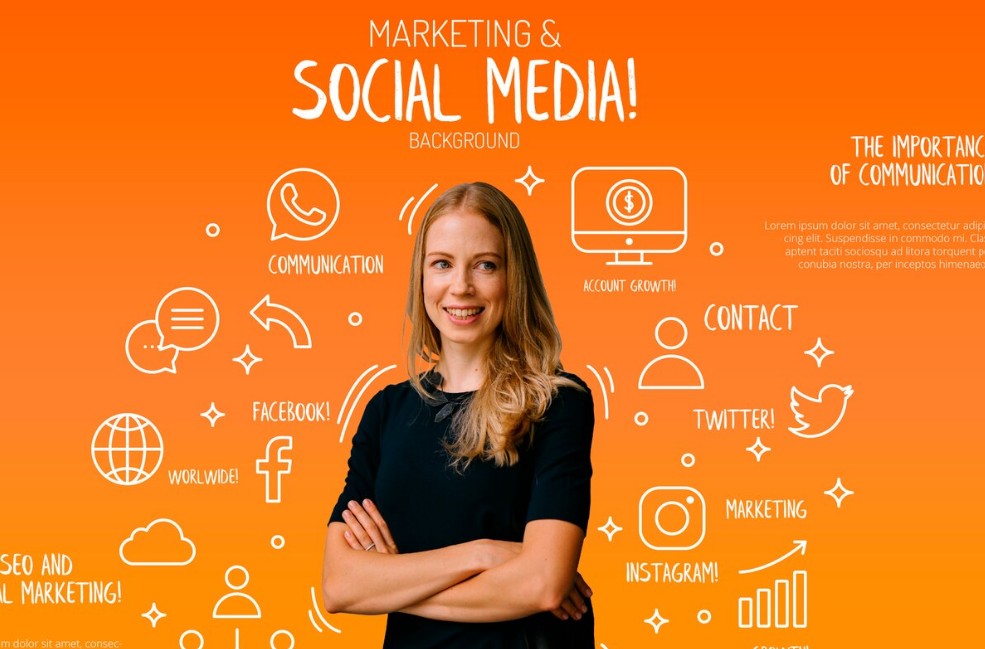Social Media Marketing: Strategies That Drive Real Results

In today’s hyper-connected world, social media is more than just a place to scroll through memes or follow celebrities—it’s a powerful marketing channel that businesses can’t afford to ignore. With billions of users across platforms like Instagram, Facebook, LinkedIn, TikTok, and X (formerly Twitter), social media marketing (SMM) has become essential for building brand awareness, engaging with customers, and driving sales.
This article dives into what social media marketing is, why it matters, and how to craft a strategy that actually delivers results.
What is Social Media Marketing?
Social media marketing is the process of creating, publishing, and promoting content across social media platforms to achieve your business goals. These goals can include increasing brand visibility, growing an audience, generating leads, driving traffic, or boosting sales.
A strong social media marketing strategy focuses not just on broadcasting content, but on building relationships and fostering two-way communication between brands and their audiences.
Why Social Media Marketing is Important
There are over 4.9 billion social media users globally. Here’s why that matters:
-
Reach: Social media gives businesses the ability to reach massive audiences.
-
Engagement: It’s one of the few marketing channels where you can interact directly with your customers.
-
Cost-Effective: Compared to traditional media, social marketing is often more affordable and offers better targeting.
-
Data-Driven: Platforms offer insights into audience behavior, engagement, and preferences.
-
Brand Building: Consistent presence on social platforms helps build trust and loyalty over time.
Key Social Media Platforms and Their Strengths
Each social media platform serves a different purpose and audience. Understanding where your target customers spend their time is key.
-
Best for: Community building, advertising, events
-
Audience: Broad, aged 25–55
-
Content types: Posts, live videos, groups, stories
-
Best for: Visual storytelling, product promotion, influencers
-
Audience: Millennials & Gen Z
-
Content types: Images, reels, stories, carousel posts
🐦 X (Twitter)
-
Best for: Real-time updates, thought leadership, trends
-
Audience: Professionals, media, activists, tech-savvy users
-
Content types: Short-form posts, threads, live commentary
-
Best for: Inspiration-based industries (fashion, home decor, DIY)
-
Audience: Predominantly female
-
Content types: Pins, boards, infographics
🎥 TikTok
-
Best for: Viral content, short-form videos, Gen Z outreach
-
Audience: Teens to 30-somethings
-
Content types: Short videos with music, challenges, trends
-
Best for: B2B marketing, recruitment, thought leadership
-
Audience: Professionals, business owners, job seekers
-
Content types: Articles, updates, industry insights
Steps to Build a Successful Social Media Marketing Strategy
1. Set Clear Goals
Start by asking: What do I want to achieve?
Common social media goals include:
-
Increasing brand awareness
-
Driving website traffic
-
Generating leads
-
Boosting sales
-
Growing followers
-
Improving engagement (likes, comments, shares)
-
Providing customer support
Use the SMART goal framework (Specific, Measurable, Achievable, Relevant, Time-bound) to guide your strategy.
2. Know Your Audience
Understanding your audience’s interests, behaviors, and pain points is critical.
Create detailed buyer personas that include:
-
Age, gender, and location
-
Preferred social platforms
-
Problems they’re trying to solve
-
Content types they engage with
-
Purchase motivations
Use tools like Facebook Insights, Instagram Analytics, or LinkedIn Analytics to gather real data.
3. Choose the Right Platforms
Don’t try to be everywhere at once—focus on the platforms where your audience is most active.
For example:
-
B2B? Focus on LinkedIn and Twitter
-
Fashion or food brand? Instagram and Pinterest
-
Youth-oriented product? TikTok and Snapchat
Start with 1–2 platforms and grow from there.
4. Plan and Create Valuable Content
Your content should educate, entertain, or inspire—ideally, all three.
Here’s a quick framework:
| Content Type | Purpose | Example |
|---|---|---|
| Educational | Solve problems, teach | How-to videos, tutorials, guides |
| Inspirational | Connect emotionally | User stories, quotes, behind-the-scenes |
| Entertaining | Engage and delight | Memes, challenges, lighthearted reels |
| Promotional | Drive sales/actions | Product demos, offers, CTAs |
Use a content calendar to stay organized and consistent. Tools like Hootsuite, Buffer, or Later can help schedule posts in advance.
5. Engage With Your Audience
Social media isn’t a one-way street. Respond to comments, answer messages, repost user content, and participate in conversations.
Quick tips:
-
Use polls and Q&As on Instagram Stories
-
Host giveaways or contests
-
Ask open-ended questions in captions
-
Join relevant conversations using hashtags
The more you engage, the more your audience will too.
6. Leverage Social Media Advertising
Organic reach has declined on most platforms—paid advertising helps cut through the noise.
Popular ad formats:
-
Facebook & Instagram Ads – Carousels, videos, lead forms
-
LinkedIn Ads – Sponsored content, InMail, job postings
-
TikTok Ads – In-feed ads, brand takeovers, hashtag challenges
Target users by demographics, behavior, interests, or even retarget based on website visits or past interactions.
7. Track and Analyze Performance
Use built-in analytics tools to measure success and optimize your strategy.
Key metrics to track:
-
Reach: How many people saw your content
-
Engagement rate: Likes, comments, shares, saves
-
Follower growth: Are you gaining or losing followers?
-
Click-through rate (CTR): Are people clicking on your links?
-
Conversions: Leads, sales, sign-ups driven by social content
Use insights to double down on what works and tweak what doesn’t.
Common Social Media Marketing Mistakes to Avoid
-
❌ Posting without a strategy or consistency
-
❌ Ignoring audience feedback or comments
-
❌ Buying followers (they won’t engage or convert)
-
❌ Using the same content across every platform without adjustments
-
❌ Focusing only on selling, not providing value
Avoiding these pitfalls keeps your brand credible and your audience engaged.
Trends to Watch in Social Media Marketing (2025 and Beyond)
-
Short-form video: TikTok and Instagram Reels continue to dominate
-
AI-generated content: Tools like ChatGPT are aiding content ideation
-
Social commerce: Users buy products directly through social apps
-
Influencer partnerships: Micro-influencers offer high ROI
-
User-generated content: Builds trust and boosts authenticity
Staying current with trends helps keep your strategy fresh and effective.
Conclusion: Social Media Marketing is About Connection
At its core, social media marketing isn’t just about pushing products—it’s about creating conversations, building community, and delivering value. With the right strategy, tools, and commitment to authenticity, social media can become one of the most effective (and cost-efficient) marketing channels in your toolbox.
Whether you’re a startup, established brand, or personal creator, the opportunity to grow and connect is just a post away.

